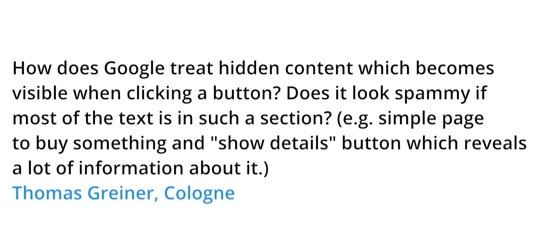A retailer who’s unfamiliar with the ins and outs of SEO best practices might worry that hiding product descriptions behind a clickable button could be considered spammy. Fear not. Google Search Engineer Matt Cutts addresses this concern in his latest Webmaster Help Channel video, in which he explains that hidden web content won’t set off red flags with search crawlers unless there are actually black hat SEO practices at play.
A site that features “Buy something”or “Show details” buttons that reveal hidden online content when they’re clicked will not be targeted by a spam-fighting algorithm, he asserts. It’s not uncommon for sites to display customer reviews, manufacturer information or product specs in a pop-up window that opens only if site visitors click specific calls to action. This can actually improve user experience because pages are not cluttered with text.
Wikipedia’s mobile site is a prime example of a page that hides content to help users find the information they want, Cutts points out. On the mobile version, text-heavy information is contained in topical sections that can be expanded when prompted by users. This prevents smartphone searchers from having to scroll through long bodies of information to find the data they need.

That being said, Google’s search crawlers can and do differentiate between sites using this feature for good or bad.
“If you are using a tiny button that users can’t see and there’s like six pages of text buried in there and it’s not intended for users and it’s keyword stuffing – that’s something that could possibly be considered hidden text,” he states.
This update reminds marketers that SEO is generally common sense – a message Cutts has been sending loud and clear. If it’s good for UX, it will probably add SEO value. If it takes away from user experience or is manipulative in any way, it puts brands’ domains at risk for Google penalties. Brafton recently reported that Google is involved with 25 percent of all internet traffic, which suggests companies have a lot to lose by going against its guidance.





